Drugs are often associated with a decline in quality of life, but to what degree? You’ve probably heard of people losing their homes, friends, family, and jobs, and may be wondering if this is true for every drug addict.
We talked to former drug addicts, did as much research as possible, and feel qualified to tackle the topic of how drugs can affect your quality of life.
While we could just say that drugs affect almost every aspect of your life, it feels important to break the topic down into smaller pieces and really dig into how drugs affect them.
Below you’ll find a list of categories commonly affected by drug addiction that we’ll touch on today.
The list above does not encompass every aspect of life affected by drugs but does cover the most important and common categories of life that are affected.

Family life is one of the most impacted aspects of life for an addict.
Finances may not be the very first thing you think of when thinking of drug abuse; however, they often play a major role in a drug addicts’ life.
The first few times you use illegal drugs, you might not think it’s a big deal and might spend less than $100 total. At this point in time, it seems harmless financially. Everyone has hobbies and $100 every couple of weeks isn’t so bad for a new hobby that makes you temporarily feel good.
The problem is that almost all drugs have a tolerance effect. This means that you need to take more of the drug at a higher dosage in order to feel the same effects. Pretty soon, the $100 every two weeks you were spending on drugs becomes $100 every few days. Before you know it, you’re blowing through your savings, and spending thousands of dollars a month on drugs.
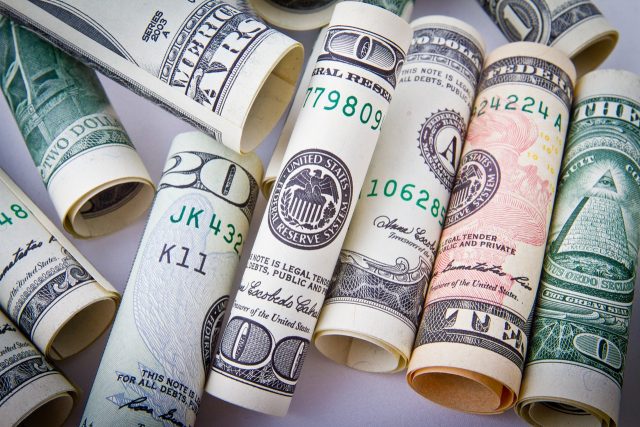
A drug habit can become very expensive to maintain.
At this point, you may realize that you can’t keep this up any longer. This is where most people turn to either crime or harder drugs.
Harder drugs like heroin can be much cheaper than something like prescription pills that you might have started on.
The allure of feeling that same type of “high” while saving money often leads people to start using these harder drugs, and unfortunately, the exact same cycle continues to occur.
At first, using illegal drugs may not seem like a big deal. Many people think that they can hide their drug choices from their friends and family, but it frequently doesn’t last long.
As drug addiction increases, the need for money increases as well. You may start asking friends and family for money without being able to pay them back.
Using drugs will also become the number one priority in your life, coming before even family and friends.
You will have to lie to your family and friends in order to keep them from finding out why you’re not spending time with them. They will also start to wonder why you’re asking to borrow so much money.
Unfortunately, drug addiction often causes you to care more about getting high than spending time with friends or loved ones.
This leads to degraded relationships and even anger among friends and family.
Using illegal drugs and being able to keep your job may seem plausible at first, but as your drug addiction becomes stronger and stronger, your job will become less important to you. It becomes more about just getting through the day so you can get home and get high.
You might start to slack off at work or start leaving early. It may also be tempting to get high while at work to make the time pass faster.
If your workplace administers drug tests, you could fail and lose your job. No matter which way you look at it, drug addiction will eventually catch up to you, making you lose or quit your job.
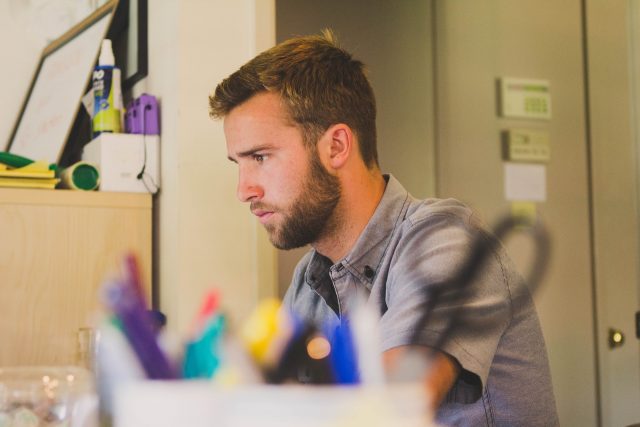
Job performance can suffer greatly during an addiction to drugs or alcohol.
One of the most important yet often overlooked aspects of drug abuse is its effects on your physical and mental health.
When people think of drug abuse health effects, they often only think of physical risks, such as heart attack, stroke, and blood pressure changes.
Illegal drugs can also cause potent and hazardous mental health issues, as well. It’s not uncommon for drugs to cause mental health issues such as depression, anxiety, hallucinations, and suicidal ideations.
These mental health risks can be especially heightened if you already have existing mental health problems.
Besides the mental health effects drugs directly cause, the loss of family, friends, money, and physical health are more than enough to cause depression and other mental issues.
Once you become heavily addicted to drugs, everything else takes a back-row seat, and sometimes even ceases to matter altogether. When all you want to do is get high every day it’s hard to have goals, priorities, and ambition in life.
Things such as relationships, money, work, goals, health, and education cease to be important. Lifelong goals take a backseat and are not worked towards anymore.
Time is wasted and goes by quickly, as once you are heavily addicted to drugs, you often take such a high dose that you are unable to normally function.
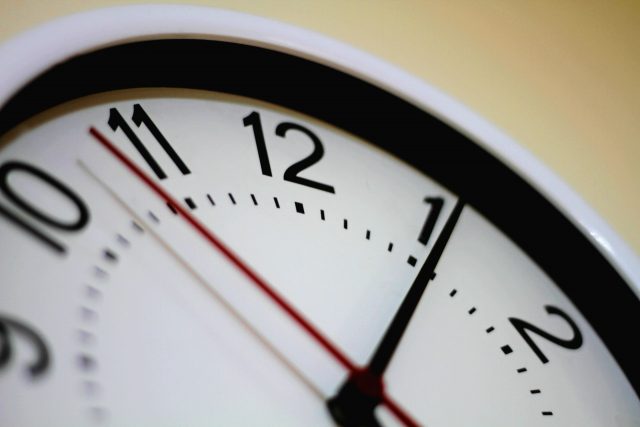
During an addiction, everything takes a back seat to your drug use.
Although becoming addicted to drugs is very real and very serious, it doesn’t have to be something that you struggle with for the rest of your life. There are many places to get advice on drug addiction treatment help, which really works. In addition to this, if you find yourself tempted or pressured into using illegal drugs, make sure to stop now, before things get worse!
It’s 100% possible to break free from drug addiction, so if you or a loved one is affected by drug addiction stay strong and don’t give up hope!
Drug usage has risen over the past decade and only seems to be increasing. It seems like we all know, or have known, someone in our lives who has fallen into the addiction of drug usage.
While many people think about the problems, drug addiction brings, not many people think about the long-lasting health effects drugs have on your body.
We scoured the internet looking for the most common reasons people avoid drugs and came up with the following list.
This is a great starter list and summarizes quite a few reasons why it’s a bad idea to abuse drugs.
One thing that generally isn’t spoken about when talking about drugs is the effect drugs have on your blood pressure.
If you’re not familiar with medicine or anatomy, blood pressure is the pressure that your heart pumps blood through your veins. If your blood pressure is too high, your heart has to work extremely hard in order to supply your body with blood.
If your blood pressure is too low, vital organs don’t receive enough blood or oxygen and can be severely damaged.
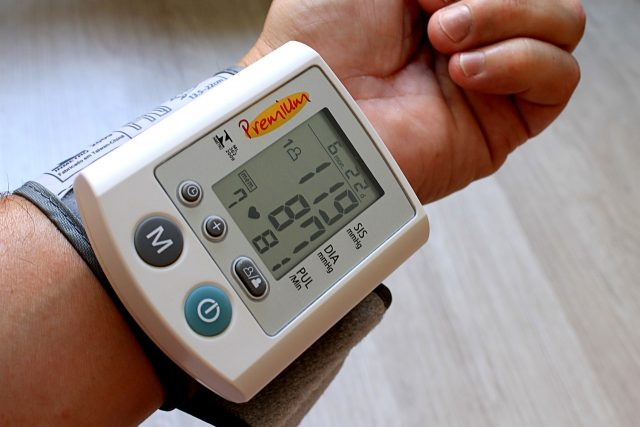
Drugs can cause serious physical health issues, beyond what might seem obvious.
Drugs affect the body in many different ways. Since there are so many kinds of drugs, it’s impossible to make a blanket statement on how drugs affect blood pressure. We can, however, break down the effects that each drug has on the blood pressure individually.
Some drugs increase blood pressure above normal; this is known as hypertension. Some drugs lower blood pressure below normal; this is known as hypotension.
Both hypertension and hypotension can be severe ailments. If your blood pressure is too high, your risk of heart attack or stroke skyrockets.
If your blood pressure is too low, you risk passing out, suffocating, or permanent brain damage due to lack of oxygen being transported through the bloodstream.
Let’s examine some of the most common drugs and their effects on blood pressure. Since each drug has different effects on the body as a whole, it’s essential to take a look at each substance individually.
Cocaine is a powerful drug which is known for its potent “upper” effects. This means that the drug increases heart rate, blood pressure, body temperature, and metabolism. When this drug is injected, it becomes extremely dangerous, since there is no barrier between the drug and the bloodstream.
Cocaine has been shown to have potent vasoconstrictive effects, meaning that it constricts and tightens blood vessels throughout your body. [1]
This makes the heart work harder in order to pump enough blood to feed oxygen to vital organs. The result is a rapid heartbeat and increased blood pressure. Cocaine is often called the “heart attack” drug because of how powerful these effects are on the body.
Users who already have high blood pressure are extremely prone to life-threatening trauma when taking cocaine, as this drug amplifies their already high blood pressure.
Amphetamines are a class of drug similar to cocaine in the fact that they increase metabolism and bodily functions. They are known to increase heart rate, blood pressure, breathing rate, and perspiration. A common amphetamine is methamphetamine, also known as meth. Meth is extremely dangerous and a leading cause of new or worsened hypertension.
This means that you could be totally healthy and normal, but by using meth, you develop hypertension. As mentioned previously, hypertension can lead to a vast array of health complications, since it forces the heart and body to work harder to keep your organs fed with blood and oxygen.
It’s important to note that this does not only apply to illegal drugs, but to abuse of prescription drugs as well, such as Adderall, Vyvanse, and other similar amphetamine-based prescriptions.
When used responsibly, these medications can be safe and effective, but their potential for abuse can be high.
Ecstasy is another culprit of hypertension and can be extremely dangerous when taken in high doses.
Ecstasy works by increasing serotonin throughout the brain and body. Serotonin is a potent vasoconstrictor, meaning that it tightens/constricts your veins. Like the previously mentioned drugs, this can lead to hypertension and other blood pressure-related health problems.
Serotonin promoting drugs known as triptans are often used specifically to prevent migraines caused by the over-dilation/expansion of blood vessels. Triptans work by releasing serotonin from the brain, causing vasoconstriction throughout the brain.[2]
As with most drugs, ecstasy is often laced with toxic and unknown compounds. Some of these compounds can be extremely toxic. It isn’t unheard of for people to lace this drug with substances such as rat poison in order to give the user a more potent “high”.

Most drugs can cause serious negative health effects.
Xanax belongs to a class of drugs known as benzodiazepines. These types of drugs are often used for anxiety or panic attacks. They are frequently abused due to their addictive sedative effects and can have severe withdrawal symptoms. These drugs often cause hypotension and can even lead to the user being unable to breathe.
Xanax is most often obtained by prescription and can have long-lasting effects on the user when abused. One of the trickiest parts about quitting Xanax is the withdrawal symptoms. In addition to its effects on blood pressure, once you stop taking Xanax, you might feel even more anxiety than when you first started. Therefore, it’s always a good idea to get in touch with a professional drug treatment service.
Overall, there are hundreds of illegal drugs that can have lasting health effects and affect your blood pressure. It’s important to avoid these substances and get drug addiction treatment help advice as soon as possible.
It’s totally possible to quit, so if you’re struggling with addiction to any type of drug take the first step today and reach out, your body will thank you!
[1] http://jpkh.org/hiring-a-roofing-professional-what-you-need-to-know/
[2]https://www.ncbi.nlm.nih.gov/pmc/articles/PMC4117050/
No matter what the details of your addiction recovery journey, experts agree - the use of CBT (or Cognitive Behavioral Therapy, as it is known) is a powerful tool to prevent relapse and fight off temptation. One study[1] of cocaine-dependent patients even showed 60% of patients subjected to Cognitive Behavioral Therapy remained clean upon a 52-week toxicology screen!
The DrugAbuse.Gov[2] website says the following about CBT:
Cognitive-behavioral strategies are based on the theory that in the development of maladaptive behavioral patterns like substance abuse, learning processes play a critical role. Individuals in CBT learn to identify and correct problematic behaviors by applying a range of different skills that can be used to stop drug abuse and to address a range of other problems that often co-occur with it.

A healthy diet and regular exercise can assist your addiction recovery efforts by easing the pain caused by withdrawal symptoms and drug cravings.
Cognitive Behavioral Therapy teaches you to stop and think about what you are doing and why you are doing it. This is important to interrupt the pattern that keeps you trapped in your addiction. Cognitive Behavioral Therapists can utilize a wide array of tools to help you to identify your problem behavior’s triggers, your responses, and then give you a methodology to interrupt the behavior before it leads to a relapse - see below.
A central element of CBT is anticipating likely problems and enhancing patients’ self-control by helping them develop effective coping strategies. Specific techniques include exploring the positive and negative consequences of continued drug use, self-monitoring to recognize cravings early and identify situations that might put one at risk for use, and developing strategies for coping with cravings and avoiding those high-risk situations.
One of the cruxes of Cognitive Behavioral Therapy is understanding what triggers your addiction. Let’s break down a few of the most common triggers below.

Loneliness is a common cause for the urge to use drugs or alcohol.
HALT is an acronym that stands for Hungry, Angry, Lonely, Tired. If you feel the need to relapse during your recovery journey, stop and ask yourself: Am I experiencing HALT?
When we think of hunger, we immediately think of physical hunger, a need for food. The signals your body sends to the brain can push you towards substance use as a coping mechanism. Learn about your body’s needs and find a snack or food that meets them. Perhaps this will cause your impulse to relapse to disappear.
Hunger can also refer to a psychological need, such as affection or intimacy. The lack of these things can also encourage us to relapse - so work out what you are missing in life with your therapist.
Anger causes a spike in the so-called “stress hormone”, Cortisol. If you are feeling anger, the urge to relapse may become very strong, as you attempt to counteract the elevated Cortisol with dopamine. There are a great many therapeutic techniques to help you deal with anger. Speak to your therapist about the subject.
The terrible feeling of loneliness - isolation, separation, being apart from others - is a powerful one. If you are feeling the need to use, consider seeing a friend or reconnecting with a family member.
A lack of sleep, or physical exhaustion, will wear down even the most stalwart individual. Sleep is tied to a great many physiological processes, and not getting enough of it will impair your ability to reason and your ability to cope. As a result, your tolerance for irritations in your life will be low - possibly feeding into anger - and substance use will seem increasingly more valid.
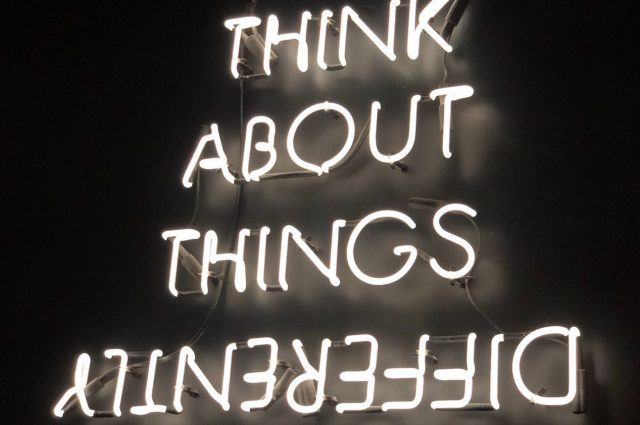
Mental health treatment is a crucial part of achieving sobriety in drug rehabilitation.
Any mental state wherein you are feeling down or hopeless can easily lead to apathy, which leads back to substance use. Speak to your therapist and other care providers about any depression, anxiety, or erratic behavior you observe in yourself. Keep a journal to watch for negative patterns in yourself mentally, and be on the lookout for any unwanted behaviors.
Likewise, physical illness and its various symptoms can make the allure of relapse seem very attractive. It is of the utmost importance to inform all your care providers that you are an addict in recovery. They need to know this information in order to make the best possible decisions regarding your care.
Nearly anyone could tell you that negative emotions and events can lead you to relapse, but the opposite is also true. Many people overlook positive or happy events as being a potential trigger for substance use. The allure of “one little drink” (or your substance of choice) as a celebration is a dangerous pitfall that can lead you to a full-blown relapse. Be mindful of your cravings in the context of a joyous occasion and head off trouble.
Some of these can be obvious, and some can be very subtle. A certain coworker or friend could remind you of the “good old days”, or even actively encourage you to relapse. Walking past a favorite bar. Talking to an ex, or a family member that gives you strong negative emotions. Interacting with former friends or associates who used drugs with you. A fast-food parking lot where substance transactions took place. Reminders of a wedding or other event you drank at. Eating specific foods or listening to a certain genre of music. The scope of potential triggers of this type is astounding - work with your therapist to identify and avoid them.
Thinking about your “good old days” and ignoring the negative consequences is an easy path to returning to them. Do not dwell on the “good times” you may have had; any recollection of those should be paired with remembering the downsides of your behavior. Avoid being around any paraphernalia, or even media glamorizing or glorifying substance use.
This was but a brief list of common triggers that can lead you to relapse. Your CBT care professional will cover more, and help narrow down your specific triggers, as well as the tools he or she believes will work best for you to interrupt any unwanted behaviors. CBT can be a powerful methodology in your recovery process.
Sources:
[1] https://jamanetwork.com/journals/jamapsychiatry/article-abstract/206714
The debate on whether or not drugs should be legal has been going on for over a century. If we look back 150 years ago, we can see that the Opium Wars crippled China for many decades. Some argue that there are still parts of China that haven’t even recovered from the epidemic.
We can also look to the morphine and laudanum epidemic that ravaged the United States post-civil war until those drugs became regulated. Finally, we can look at today, where certain states such as Utah and Ohio have incredibly high rates of opium related deaths, compared to other states in America.
In the early 2000s, Portugal decided to decriminalize drugs of all types after two decades of some of the strongest abuse rates in its nation's history. These days, if you are caught being in possession of any drugs, you are either given a warning, a fine, or are told to appear before a local commission.

Drug legalization has helped other countries actually control drug use. But, could it work in the United States?
This local commission is made up of social workers, lawyers, and doctors, who help drug users understand that there are treatments and support available to them.
Since this change, Portugal has seen dramatic drops in substance abuse rates, as well as addiction rates. There are still some long-term concerns with this policy, though. Since the policy hasn’t been in effect for very long, it's hard to tell what the results will be on the overall health of Portugal’s people.
Diseases such as hepatitis C and liver cancer are prevalent in people who abuse hard drugs, and only time will tell if decriminalizing these drugs was an effective move.
It's important to note that just because decriminalizing all drugs in Portugal has seemingly had a positive effect; it doesn’t mean that this approach will work universally. Every nation’s situation is vastly different, and this isn’t a “one size fits all” solution.
Decriminalizing drugs in the United States is prone to many problems, but the current system we have in place does not seem to be very effective either.

The war on drugs has been a significant failure in the United States. How do we get people to quit using drugs?
It seems that the key to minimizing the drug epidemic in America is to provide people the help and resources that they need to recover from their addiction.
Addiction is almost always considered a disease by most medical institutions, and to fight it you need to treat the person who is suffering the same way you would treat someone who is suffering from any other ailment.
Throwing a drug addict in jail doesn’t solve any problems. In many ways, it's just putting off the issue until that person gets out of jail, only to repeat the same offenses.
A report done by CASA Colombia found that in 2005, the government spent around 74 billion dollars on incarceration costs for substance-related offenders (which included court proceedings, probation, parole, and actual incarceration).
In contrast, the government only spent only 632 million (which is less than 1% of 74 billion) on prevention and addiction treatment.
On top of that, the report found that only 11% of all inmates received treatment and help for their addiction. Based on this data, it seems that the focus in prison is to use fear and punishment as prevention, rather than providing inmates with the help that they need to recover.
When you look at Portugal’s approach to drug addiction, it does appear as though they are on the right track towards handling drug addiction.
In the United States, if you are caught being in possession of any schedule one drug, (which includes heroin, LSD, cocaine, meth, etc.) it is considered a felony.
If it’s not your first time being charged with possession, it will almost certainly result in spending time in jail and/or a very large fine. On the surface, the reasoning behind this makes sense. If you do something that is against the law, you go to jail.
This is how governments and societies have worked for centuries, but this solution has proven over the past couple of decades to be ineffective.
Since the “war on drugs” started back in the ’80s, the government has spent over 1 trillion dollars in efforts to control the use of these illegal substances; meanwhile, the number of people incarcerated for drug usage has drastically increased.

The war on drugs is big business in the United States. Do police protect our freedoms by locking-up drug users in jail?
Clearly, the way that we handle things currently isn’t working, and we need to find another solution. Locking people up in jail doesn’t prevent the problem; it only prolongs the problem.
Although Portugal seems to be on the right track, it doesn’t feel right saying that we should make every illegal drug legal.
In the same report referenced earlier, CASA Colombia found that out of the 2.3 million people who were incarcerated at the time, 85% had a record of substance abuse.
On top of this, drugs were involved in 78% of all violent crimes, and 83% of all property crimes. Based on this data, it seems incorrect to legalize all drugs.
People who are under the influence of drugs can be hazardous and unpredictable, which is why drug-related laws were created in the first place. Long term abuse of these drugs can also be incredibly harmful to your body.
According to the American Addiction Center, prolonged use of cocaine is heavily linked to heart and brain problems, due to the fact that the drug alters the user’s respiratory system. These problems are often not easily detected, and when they are, it is often too late to do anything about it.
Answering the initial question of “should all drugs be legalized?”, is a very complex and delicate matter, and is not as simple as yes or no. We need to find a new way to handle these issues because the drug laws we have in place don’t seem to work. The black market can add dangerous, synthetic drugs that perhaps would have never been created, had other drugs been legal.
Portugal had a great initial idea of helping and treating people who are addicted to drugs, rather than incarcerating them. The real question is whether this type of approach would work in the United States.
Regardless of location or individual beliefs, we need to move away from harsh punishments and instead focus on helping people with addictions recover.
https://vittana.org/16-decriminalization-of-drugs-pros-and-cons
https://www.ibtimes.com/pros-cons-drug-legalization-us-246712
https://jsberrylaw.com/blog/when-is-drug-possession-considered-a-felony/
https://americanaddictioncenters.org/health-complications-addiction/permanent-effects
https://www.livescience.com/60559-opioid-crisis-echoes-epidemic-of-1800s.html
https://www.huffpost.com/entry/after-40year-fight-illici_b_3623714
The term "legalization of all drugs" refers to the advocacy for removing legal prohibitions on the production, distribution, possession, and use of currently illicit drugs, effectively allowing their legal sale and consumption. This approach contrasts with the current paradigm of drug prohibition, where certain substances are deemed illegal by law, leading to criminalization of drug-related activities and enforcement through punitive measures such as arrests and incarceration. Advocates for drug legalization argue that it could reduce drug-related crime, undermine the black market, and redirect resources towards public health-oriented approaches such as harm reduction and treatment. However, opponents raise concerns about potential public health and social consequences, including increased drug use and addiction rates.
Drug legalization could impact drug epidemics in various ways, depending on the specific policies implemented and the context in which they are applied. Proponents argue that legalization could lead to better regulation of drug markets, reducing the potency and harmful additives in drugs, which could potentially lower overdose rates and decrease drug-related harms. Additionally, legalization could redirect resources from enforcement towards public health initiatives, such as education, prevention, and treatment, addressing underlying factors contributing to drug epidemics.
However, opponents of drug legalization express concerns that it could exacerbate drug epidemics by increasing the availability and accessibility of drugs, potentially leading to higher rates of drug use and addiction. Moreover, legalization may not fully address the social determinants of drug use, such as poverty, trauma, and social inequality, which contribute to drug epidemics. Therefore, the impact of drug legalization on drug epidemics would likely depend on a complex interplay of factors, including policy implementation, regulation, and broader societal dynamics.
The potential benefits of drug legalization are multifaceted. Firstly, legalization allows for government regulation of drug production, distribution, and sales, ensuring quality control and safety standards. By reducing the presence of harmful additives and contaminants in drugs, legalization could lower the risk of overdose and other health complications. Moreover, legalizing drugs has the potential to undermine the black market and reduce drug-related crime associated with illicit drug trade, such as violence, gang activity, and drug-related offenses. By shifting drug sales from underground markets to legal, regulated channels, legalization could diminish the power and influence of criminal organizations.
Additionally, legalization can redirect resources from law enforcement and incarceration toward public health-oriented approaches, including prevention, education, and treatment.This shift in focus could lead to improved access to healthcare services, harm reduction initiatives, and addiction treatment programs, addressing substance abuse as a public health issue rather than a criminal one. Furthermore, legalizing drugs could generate tax revenue from drug sales, similar to the taxation of alcohol and tobacco products. This revenue could be allocated towards drug education, treatment programs, and other social services, benefiting communities affected by drug abuse.
Drug legalization could increase demand for healthcare services related to substance abuse prevention, education, and treatment, requiring healthcare systems to expand their capacity. Redirecting resources from law enforcement towards healthcare initiatives could enhance the availability of addiction treatment programs and support services. However, healthcare systems may also face challenges in addressing complex health issues associated with drugaddiction, such as infectious diseases and mental health disorders.
When you think of illegal drugs, the environment may not be the first thought in your mind. Contrary to what most people may believe, illegal drug use does harm the environment in multiple ways.
Cocaine is one of the most serious offenders in the drug world. Before we get into the actual process by which cocaine harms the environment, let’s go over some of the basics about the drug itself.
Cocaine is an illegal drug that is fairly common among those who are addicted to drugs. Its effects are noticed very quickly, but also disappear very quickly as well. Due to its short-term effects, cocaine is often abused multiple times a day and can lead to severe health consequences. [1]
Due to the short length of time that cocaine affects the user, it can get very pricey very quickly. Many people find themselves becoming so addicted that they dose multiple times a day and run through their savings quickly.
Cocaine also has some serious health effects which can even lead to death. Cocaine is so damaging to the heart that even a first-time user can have a fatal heart attack. Cocaine alters the body in some serious ways, leading to high blood pressure, stroke, heart attack, and increased body temperature.
In addition to the physical effects listed above, cocaine also has some powerful mental effects. Cocaine can cause feelings of anger, irritability, anxiety, and paranoia.

Cocaine is one of the most environmentally destructive drugs on the planet. Cocaine production doesn’t just end up causing pollution, but actually destroys the rainforest itself.
In order to understand how cocaine affects the environment so much, we need to back up and look at how cocaine is created.
Cocaine is extracted from coca leaves, which are found primarily in the Amazon rainforest in South America. The amazon is a massive rainforest and makes up a significant portion of the world’s trees and biome.
Drug cartels and smugglers create cocaine from the leaves of the coca tree. The process by which cocaine is created is extremely inefficient and involves cutting down many trees to make a small amount of powdered cocaine.
This means that the higher the demand for cocaine becomes, the more coca trees are needed. Cartel members and other cocaine producers are constantly being met with a huge demand that they seek to fill.
This demand leads to them chop down the rainforest in order to clear room for more coca trees. Cocaine producers don’t care about the environment, plant life, or animal life in the area, and often cut or burn down large portions of the Amazon rainforest in order to make room for more coca trees.
This leads to out of control fires and the loss of many different species of plant and animal life. There are many species of animals that live in the Amazon rainforest that are now endangered due to these practices. Some endangered species in the amazon include golden lion tamarin monkeys, poison dart frogs, harpy eagles, and jaguars.
Besides harming the environment, cocaine harms billions of lives every year. There are obvious cases such as those who use cocaine personally, but there are other cases you might not have thought about yet either.
Gangs in Columbia and other parts of the amazon rainforest are always doing what they can to produce as much cocaine as possible. They generally don’t care about human life, the environment, or anything else besides money.
There is so much gang violence and competition for cocaine production that many people are killed by gangs in the area. These gangs are fighting for control of portions of the Amazon so that they can produce even more cocaine. In addition, gangs will often place land mines and other incendiary devices throughout the rainforest so that people won’t steal their crop of coca trees.
These landmines claim hundreds of innocent victims' lives every day, and also cause the death of many animals in the rainforest.
Native tribes and other people who live near or in the amazon are often uprooted and have their possessions stolen or burned by gangs who are creating more space for their cocaine production efforts.
Children are often used as manual labor for harvesting coca leaves and treated inhumanely. They are even sometimes told to use cocaine, and subsequently, become addicted. These inhumane labor forces are used to destroy the rainforest and harvest coca leaves, which are then turned into the drug cocaine.
In addition to harming animals, plant life, and the environment, cocaine usage has some seriously damaging effects on individual communities. Cocaine sales put more and more money in the pockets of gang members, which trickles back into the pockets of those cartels who destroy the environment to produce more and more of the drug.
This also leads to violence in the community, as many gangs and individuals fight over rights to sell cocaine, and even fight over usage of the drug itself.
In the USA, law enforcement spends over $25 billion every year on drug treatment, prevention, and enforcement actions. A good portion of this drug-related spending is from cocaine itself, which means cocaine is harming people, animals, the environment, and even indirectly increasing the amount we pay for taxes.
Cocaine may seem like any other illegal drug, but it has some serious lasting effects that go beyond just the user’s life. Cocaine production is responsible for major environmental destruction.
This environmental destruction has led to the endangerment of multiple species, the destruction of native tribes, and the destruction of the rainforest itself.
In addition to the environmental issues noted above, cocaine is responsible for billions of dollars of government spending, and only amplifies gang-related crimes in countries around the world.
[1] https://www.drugabuse.gov/publications/research-reports/cocaine/what-are-short-term-effects-cocaine-use
[2] https://sites.psu.edu/endangeredenvironment/2016/02/12/the-amazon-rainforest/
Deforestation is closely linked to cocaine production, particularly in regions where coca plants are cultivated. To create space for coca plantations, farmers often clear large areas of forests, leading to significant deforestation. This destruction of forest habitats not only contributes to environmental degradation but also disrupts ecosystems and threatens biodiversity. Moreover, deforestation increases soil erosion and runoff, negatively impacting water quality and further exacerbating environmental damage. Therefore, deforestation driven by cocaine production has far-reaching environmental consequences beyond the immediate cultivation areas.
Illegal drug laboratories used in cocaine production can have severe environmental impacts.These labs often operate clandestinely in remote areas, where they dump toxic waste materials, such as solvents, acids, and other chemicals, directly into the environment. This contamination can lead to soil and water pollution, poisoning local ecosystems, and posing health risks to wildlife and nearby communities. Additionally, the construction and operation of drug labs may involve deforestation, habitat destruction, and disruption of sensitive ecosystems. Furthermore, the use of chemicals in cocaine processing can contribute to air pollution, affecting air quality and potentially harming human health. Overall, the environmental impacts of illegal drug laboratories used in cocaine production can be significant and long-lasting, posing threats to biodiversity, ecosystems, and public health.
Cocaine usage contributes to climate change through various indirect mechanisms. One significant factor is the deforestation associated with coca cultivation. Clearing forests to make way for coca plantations releases carbon dioxide stored in trees into the atmosphere, contributing to greenhouse gas emissions. Additionally, the illegal drug trade often involves long-distance transportation routes, which rely heavily on fossil fuels, further exacerbating carbon emissions and air pollution.
Moreover, the chemicals used in cocaine production, such as fertilizers, pesticides, and solvents, can have harmful environmental impacts, including soil degradation, water pollution,
and disruption of ecosystems. These environmental stressors can contribute to climate change by altering natural carbon and water cycles and reducing the resilience of ecosystems to climate-related disturbances. Overall, while cocaine usage itself may not directly emit greenhouse gases, its production, transportation, and associated environmental impacts can indirectly contribute to climate change.
The potential long-term consequences of cocaine-related environmental damage are significant and far-reaching. Deforestation associated with coca cultivation can lead to the lossof biodiversity, disrupt ecosystems, and cause soil erosion, which may take decades or even centuries to fully recover. This loss of forest habitats threatens endangered species and reduces ecosystem resilience to climate change and other stressors.Moreover, soil and water contamination from chemicals used in cocaine production can harm human and ecosystem health, leading to chronic health issues for local communities and loss of agricultural productivity. The degradation of natural resources undermines local economies, exacerbating poverty and social inequalities. Indirectly, cocaine-related environmental damage contributes to climate change, which poses risks to global ecosystems, human health, and economic stability. Addressing this damage is crucial for safeguarding ecosystems, communities, and future generations.
Drug addiction often involves many different substances and is certainly not limited to only illegal drugs. Drug seeking behaviors can be developed from a legally-obtained prescription from a doctor, this happens quite often.
One of the leading causes of drug addiction in the United States is the over-prescription of pain-blocking narcotics. These painkillers are quite effective at treating pain but are also extremely addictive.
Up to 30 percent of prescription painkillers are used by someone other than the patient they were prescribed to. When you take a step back and realize that these are legally prescribed drugs being abused, it can seem daunting to think about the amount of illegal drugs that are being abused as well.
Drug warning signs are often some of the first clues you will notice in a friend or loved one who is addicted to or seeking out drugs.

Once a person becomes addicted to drugs or alcohol, their behavior will be geared towards maintaining their high.
Some drug-seeking behaviors are more difficult than others to spot, but it’s imperative to take action as soon as possible if you spot any substance abuse warning signs.
Often, when someone has first started abusing drugs, they may seem more secretive and try to hide the habit. This is in stark contrast to someone who has been addicted to drugs for a while, as they generally don’t care about hiding their habit, and are focused more on fueling their addiction, exhibiting clear drug-seeking behaviors.
Some early warning signs are:
As you may have noticed, some of these drug-seeking behaviors are more obvious than others. One of the first signs you might notice is a change in their behavior. There’s no black and white description of how behavior might change, as drugs affect each individual differently.
The best chance you have of catching drug usage early is to foster a strong relationship with friends, loved ones, or anyone you suspect of having a high risk for potential substance abuse.
Most of the time, people who have just started taking drugs will lie in order to keep their addiction private. They fear judgment, legal problems, or even just being cut off from a substance that is temporarily giving them the euphoria they crave.
As previously mentioned, drug addiction and substance abuse are not limited to only illegal drugs. In fact, a large number of initial drug addicts become addicted to legal pain prescriptions.
These pain prescriptions may seem harmless at first, and when taken as prescribed, do indeed help many people. The problem is that they are very easy to abuse and are often more expensive than illegal drugs.
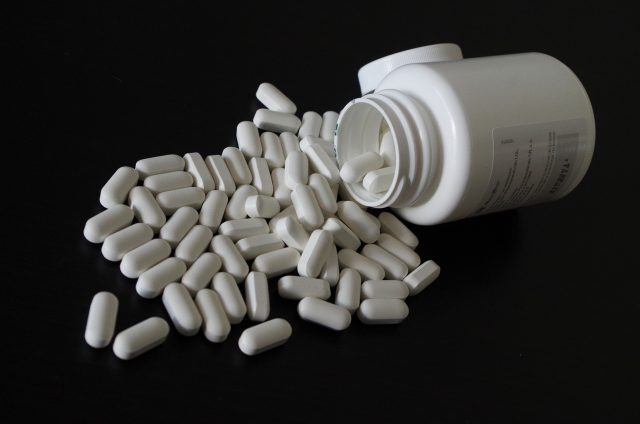
Opioid dependence can happen in as little as 7 days. Once the prescription runs out, many Americans turn to drugs like heroin to avoid painful withdrawal symptoms.
Many people who become addicted to illegal drugs start by abusing their prescription pain pills. As they develop a tolerance to these prescription narcotics, they start needing more and more in order to reach the same level of euphoria that they seek.
This can get out of hand very quickly and end up costing thousands of dollars a month since prescription pain killers are often very expensive.
When someone who is addicted to prescription pain killers can’t seem to get enough of them or runs out of money, they often turn to other drugs.
Drugs such as heroin are almost always much cheaper on the street than prescription pain killers are and have a much more potent effect. To someone addicted to prescription painkillers, it can seem very enticing to pay ¼ of what they normally would for prescription pills and get the same or even stronger effects.
If you notice any warning signs in a friend or loved one, it’s important to have an honest discussion with them before things spiral out of control, as illegal drugs pose serious health risks, and can be very difficult to get off of.
If you suspect a friend or loved one of drug-seeking behavior, it can be challenging to know what to do.
Many parents who suspect their child of drug abuse immediately rush off to the nearest pharmacy and force their child to take an in-home urine test. While this may work in the short term, it doesn’t address any underlying issues and may cause an even bigger rift in your relationship.
The first step to having a conversation about drug usage is making sure the individual knows that you care about them.

Approaching a loved one about substance abuse is never easy. Let them know your intention is to help them.
Before you even dive into a drug-related conversation, you need to make sure that you have a good relationship. This isn’t always possible, but as long as you’re doing everything you can think of on your side, it’s often enough to create some level of trust in the relationship.
No one wants to admit that they are struggling with a substance abuse problem, however, if they feel that you truly care about them as an individual, they will be much more likely to feel that you have genuine intentions and are ready to listen.
Once you do have a conversation about drug usage, it’s important not to immediately chastise or talk about how poor of a decision drug usage is. Chances are, whoever you’re speaking with about drug usage already knows this. Instead, be kind, supportive, and ask how you can help.
One tip that has been proven to help is to create a help-line relationship. This means that when someone who is addicted to drugs feels a strong urge to use, they get in touch with you immediately.
You can then help to talk them through the pain of addiction they may be feeling, and offer help, support, advice, and even spend time with them to ensure they don’t relapse.
Overall, identifying drug-seeking behavior can be tricky, but it is certainly not impossible. The most important thing you can do is develop a solid relationship and keep your eyes out for signs of behavioral changes.
Remember that overcoming addiction is always possible, so never give up hope!
Inevitably, one of the first questions asked when discussing drug or alcohol rehabilitation programs is, “will my insurance company pay for it?”
If you have employer-provided or otherwise “private” insurance, you must contact your insurer to discover the exact terms under which your insurance covers your recovery journey. However, if you are one of the 12,000,000 (that’s 12 million!) Americans who receive their insurance coverage via the Affordable Care Act exchange (AKA ‘Obamacare’), you are in luck.
Mental and behavioral health services are essential health benefits
All plans must cover:
Your specific behavioral health benefits will depend on your state and the health plan you choose. You’ll see a full list of what each plan covers, including behavioral health benefits, when you compare plans in the Marketplace.
The above text, taken from Healthcare.Gov, shows us that It is a requirement of the Affordable Care Act that providers pay for at least some of your treatment and recovery process. However, that’s not the end of the story.
The majority of plans on the Affordable Care Act exchange are high deductible, meaning you must hit a dollar amount spent per calendar year before you gain the benefit of your insurance coverage.

You can relax, knowing that your mental health needs are covered by your insurance.
Additionally, you will be responsible for a “copay” or “co-insurance” even after you reach this deductible limit. The cap for “max out of pocket” is often quite high for more economically priced plans, so that “copay” will likely be an ongoing part of your recovery process.
However, not all the news is dour. Let’s refer to Healthcare.gov again:
Pre-existing mental and behavioral health conditions are covered, and spending limits aren’t allowed
The pre-existing condition language tells us that the insurer cannot attempt to avoid the responsibility of assisting your recovery journey by stating that your disease arose before you were covered under their policy. The second point states that the insurer cannot make you wait to seek treatment for your sickness - your coverage begins as soon as the policy is in effect. Lastly, they cannot cap their expenditures on your rehabilitation, as opposed to say, limiting your number of counseling sessions.
However, there are more concerns at hand than just financial. To get the treatment you need, we must consider the following:
Depending on the care you need, you may need a referral from a doctor for the care to be covered by insurance. HMO plans often have this requirement, and your PCP (Primary Care Provider) would have to evaluate your situation and provide referrals accordingly for you to have your care covered by your insurance.
PPO plans, on the contrary, will often allow you to simply seek the care you require without having to have your PCP approve it. If you have any questions whatsoever, contact your insurer on the phone number on your card.
Another consideration is the nature of your addiction. Under the ACA, coverage for alcohol, opioids (prescription and otherwise), and recreational drugs is mandatory. However, coverage for other addictions, such as behavioral (for example, a social media addiction, or online gaming addiction) may not be - consult with your doctor and insurance company for clarification.
Medically Assisted Treatment, or MAT, is the use of ‘maintenance’ drugs such as Suboxone and Buprenorphine (or Subutex), combined with various types of therapies to prevent relapses. Some treatment plans are covered by ACA insurance, and some are not. Again, the best way to avoid unexpected financial hardships during your treatment is to consult with your doctor and your insurance company.
When your doctor refers you to a course of treatment, your chart is submitted, along with his or her recommendation, to the insurance company, where their internal adjustors make a decision to cover the claim or deny it. If you are denied the claim, immediately demand a review of the decision. If their denial is especially egregious, they may cave immediately.
If they do not, then your claim is submitted to a doctor employed by the insurance company to decide if the plan is medically necessary. This is what is known as an “Internal Review”. If the insurance-employed doctor upholds the rejection of the claim, do not fret. You should then immediately demand an outside doctor review the claim, in what is known as an “External Review”.

Insurance coverage can help you achieve the healthy lifestyle you know you want.
Some insurers have so-called “Fail First” policies, to where you must have relapsed on a cheaper outpatient program before they will honor a claim for an inpatient program. Outpatient programs are often quite successful, so unless your living situation is untenable in regards to your recovery journey, you may find that these are a better option than going to an inpatient rehabilitation center.
These processes can often be avoided if your referring doctor is familiar with the correct wording and verbiage to use in your chart to impress upon the company the debilitating and time-sensitive nature of your addiction. Your doctor can be a powerful ally if they are experienced in dealing with often stingy insurance companies.
Your ACA plan does cover rehabilitation services. The amount of coverage varies based on your insurance plan. You will likely face up-front costs (your deductible) before your insurance provider steps in. Some types of addiction may not be covered, but major chemical dependencies are (opiates, alcohol, so-called ‘recreational drugs’).
Some providers will require a referral, and some will not. Verify with your doctor and insurance company about what is covered and what is not. If your treatment plan is denied - immediately challenge the denial. If the internal review is denied, challenge again for an external review.
It may seem complicated, but by being proactive and fighting for yourself you have a good chance of getting rehabilitation programs to be covered by your ACA plan.
Sources:
As we outlined in part 1 of this series, body brokering has been made illegal at the Federal level with the passage of the 2018 SUPPORT act. However, this bill contains an unfortunate loophole. This allows drug rehab centers to continue to use body brokering to recruit new patients into their facilities.
The 2018 SUPPORT for Patients and Communities Act allows for “certain payments to bona fide employees and independent contractors”. In this sense, eliminating kickbacks to just anyone off the street, like the drug rehab bounty hunters who were looking for kids and young adults with insurance coverage. Now the same people that brokered patients who were struggling with addiction, can become hired, (on salary) from a drug rehabilitation clinic. As long as they aren’t paid per head, there is technically not a “kickback” taking place. This is what is keeping much of the practice of body brokering alive and well in today’s drug rehabilitation industry.
As mentioned earlier, some of these “recruiters” are even licensed insurance agents and can sign you up for insurance if you don’t have coverage. Let me remind you that many of these people are not in the game to truly help people overcome their addiction. Maybe most of them really think that’s what they are doing. Maybe they think they are helping others, but when motivated by money and greed, the consequences of their actions can be deadly. Remember that to these businesses, relapse is much more profitable than sobriety and recovery.
This was a comment from a post on a private Facebook group. And yes, you read that right… A recruiter, who took a young woman out of state to a rehab facility, got her involved in the relapse to rehab shuffle, went to her funeral and did the same thing to others. This person ended up recruiting 5 more young addicts. Is this not madness yet? Why aren’t the insurance companies doing anything about this?
That’s a great question, that doesn’t have an answer yet. While some groups have organized, creating websites concerning ethics in addiction treatment, I can tell you that there definitely are ethical addiction treatment providers out there. I should know, I work with a handful of them.
When substance abuse treatment is provided with the best intentions, treatment does work. It can help people turn their lives around, but recruiters can be very persuasive with illegal inducements to re-enter treatment. This is a system that encourages people to inflict self-harm, relapsing just to restart their insurance coverage.
This happens all the time, someone who is in recovery goes to a 12 step meeting as a method of continuing aftercare upon the completion of their drug rehabilitation program. Many addicts graduate the treatment program and begin staying at sober living homes. Or, they relapse and enter the drug rehab shuffle at the beginning again, going through detox, inpatient rehab then on to a sober living home. Sometimes this cycle repeats indefinitely.
Some unscrupulous marketers will attend 12 step meetings regularly and try to talk people into either relapsing for treatment or entering their sober living home. Since they are bona fide employees of the company, technically, their work doesn’t produce a “kickback”. Many recruiters are paid salary because that’s just how you get around the law.
Since I don’t personally know any rehab recruiters, I can only assume that they have monthly quotas to meet. A certain number of heads to fill the beds at the rehab facility, otherwise, they’d be fired for not producing results. With the average client bringing in roughly $800 per day, the stakes are high. So, how does the $35 billion dollar a year addiction treatment industry keep growing for its investors? By finding more and more people who need treatment.
With drug addiction rates and drug overdose deaths skyrocketing in the United States, the market is definitely there. Drug rehab has even (inadvertently) created its own lifestyle around their existence.
Many drug rehabilitation centers around the US are rapacious. Most business entities are. It’s the nature of capitalism after all. That’s how jobs are created, so our economy keeps growing and moving forward. In healthcare enterprises, this frequently creates an incentive for putting profits above the needs of people. Unfortunately, this is precisely what happened to the addiction treatment industry, in a very short amount of time.
New patients to drug rehabilitation centers typically enter treatment, because they want to get better. In places like Florida and California, (where most of the nation’s rehab centers are located) the need to find new patients became urgent. Body brokers and rehab recruiters began offering inducements to people from out of state that needed treatment. They would buy the airline ticket or arrange travel to their rehab facility, completely free to the patient.
At first, this seems like a wonderful opportunity for the patient - to finally have access to treatment. It also offers them a chance to escape their daily routine, so they can focus on recovery. This is all fine and dandy until their insurance coverage runs out. Many of these patients get kicked out of rehab, onto the streets, with no money and no return ticket home. Many become homeless and begin to use drugs again. They know if they go out and get high, they can become eligible for treatment again, and thus, the rehab shuffle begins.
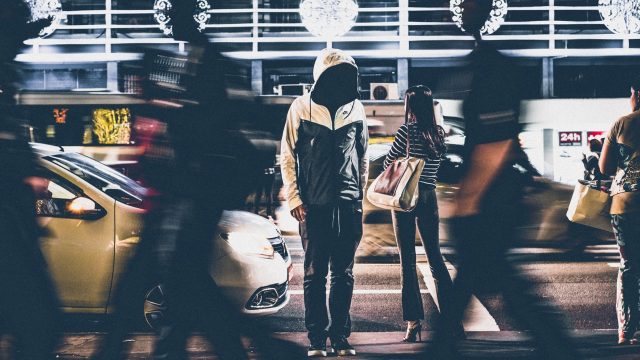
Many young addicts are lured into a revolving door of addiction treatment and sober living arrangements by drug rehab recruiters.
For many young adults in the US, rehab has become an alternative to homelessness. Rehab is also an alternative to working some shitty fast-food job, where you barely scrape together enough money every month to eat and pay for rent. Economic opportunity for young people in this generation isn’t the same as it was for their parents. Rent is astronomically high right now. College tuition has increased by an average of 234% since 1990. Hell, even if you go to college, it is still hard to find a decent paying job.
It seems that the odds are not stacked in your favor. With the lack of economic opportunities for today’s youth, it’s no wonder why so many of them end up depressed while turning to drugs and alcohol to self-medicate their inherent feeling of hopelessness.
Once a kid enters a drug rehab facility, seeing how easy it can be, it’s hard for them not to crave the ease of being institutionalized. Body brokering exasperates that desire for many young adults, offering them "the easy life" through inpatient rehab. This is where all of your basic life’s needs are met, while your parent’s insurance policy covers the bill. That is until your benefits run-out, or you turn 26 and are kicked off of your parent’s insurance plan. Sadly, a lot of young adults find themselves in this situation: homeless, unable to find a job, and addicted to drugs. It’s undeniable that this relapse-to-rehab-shuffle has greatly contributed to the growing homeless populations in many American cities.
You can read part 3 of our expose' here:
https://strugglingwithaddiction.com/2019/03/10/drug-rehab-marketing-recruiters-body-brokers/
According to the National Institute on Drug Abuse (NIH), the number of Americans using illicit drugs is on the rise. According to a study conducted in 2013, an estimated 24.6 million Americans (9.4% of the population) over the age of 11 had used an illegal drug in the past month. A similar study was conducted in 2002, which showed only 8.3% of the population using illicit drugs. [1] As drug use continues to rise, ‘it’s imperative to know the signs, as they could ultimately be life-saving.
Which Illicit Drugs Cause Red Eyes?
Though many drugs impact the coloration or behavior of the eyes, it can be difficult to come to concrete conclusions regarding which drugs an individual may be taking, by simply looking at their eyes.
While certain drugs have telltale signs, looking at a drug user’s behavior and identifying it based purely on symptoms can be difficult. In addition to observing symptoms, observing eye discoloration or dilation will yield the most accurate results.
Typically, the drugs listed below are known for their influence on the eyes.
Marijuana: Red, bloodshot eyes
Cocaine/Hallucinogenics (LSD)/Ecstasy: Pupillary dilation, mydriasis (enlarged pupils even in bright environments)
Methamphetamine: Rapid Eye Movement
Heroin/Opioid Abuse: Pinpoint Pupils
Alcohol: Larger pupils as well as slower pupil reaction, eye twitching (myokymia)
Marijuana
One of the signature signs of marijuana is the bloodshot eyes that accompany its use. Many people believe that edibles are a way to avoid them, yet this is not the case. The reason for eye redness is not due to the smoke, but rather to the THC contained within marijuana. THC lowers blood pressure, which can cause blood vessels to dilate. [2] Other signs of marijuana use include increased appetite, dry mouth, lack of motivation, and anxiety. [3]
Cocaine/Hallucinogens
Cocaine is known for enlarging the pupils; the relationship is so strong people sometimes refer to large pupils as “cocaine eyes.” Sometimes individuals experience eye reddening along with the dilation, but this is not common for everyone. Other signs of cocaine use are rapid heart rate, cocaine-induced anxiety, nervousness, aggression, insomnia, and sensitivity to light. [4] Mydriasis is a condition where the pupils stay dilated even when not using cocaine; individuals who use cocaine, hallucinogenics, ecstasy, and meth can develop this condition. [5]
Methamphetamine:
Methamphetamine is known for giving off a very quick and powerful high that fades quickly. Meth rapidly increases the dopamine in the brain. Dopamine is responsible for motivation, body movement, and the “rewards center” of the brain. Short term effects include fast breathing, irregular heartbeat, increased blood pressure, and rapid eye movement. Long term effects of meth use include weight loss, addiction, memory loss, anxiety, paranoia, and hallucinations.[6]
Heroin/Opioid Abuse
Signs of Heroin abuse include pinpoint pupils, bluish lips, difficulty breathing, and a weak pulse. [7] An easy way to differentiate between users of cocaine and heroin are the pupils. Heroin users will have very small pupils, whereas users of cocaine will have pupils that are very large. Typically heroin users do not have red eyes and will do anything to get their hands on the drug. Heroin has a difficult withdrawal period of at least a week as the body can quickly develop a dependency on it, even after a quick or short binge period.
Opioid abuse is more prevalent today than ever; substances such as Oxycodone/Hydrocodone and Fentanyl are flooding the market. Reeling from the over-diagnosis of ADHD and prescribing too many opioids to children, doctors are cutting back on prescribing opioids, but many are still heavily addicted. Now that doctors are less inclined to satisfy their needs, individuals are turning to disreputable dealers to get their pain-killers. Fentanyl is 100 times more potent than morphine and can kill even in the smallest doses.[8] It carries many of the same signs as heroin, with the main sign being the pinpointed pupils.
Alcohol
Though consumption of alcohol is legal for those over 21 in the United States, ‘it’s important to know the signs as well as the differences between an individual using illicit drugs versus one who is intoxicated. Intoxication increases pupil size just like cocaine, but for the vast majority of individuals, this will be far less pronounced than those who are using cocaine or hallucinogens. Signs of intoxication also include slurred speech, slower pupil reaction, as well as eye twitching. According to the NIH, 26.9% of Americans over the age of 18 reported binge drinking in the last month. With Alcohol-related deaths reaching 88,000 a year, [9] alcoholism is no joke and should be treated just as seriously as many of the illicit drugs on this list.
Warning Signs
In a study conducted by PMC, a subsidiary of the NIH, a group of neuroscientists explored what the early detection of illicit drug use in teenagers was. Their results indicated that one of the first signs of teenage drug use is changes in behavior and mannerisms. They noted that changes in behavior, violent tendencies, isolationism, lack of motivation, and instability were some of the key factors in identifying illicit drug abuse among teens. Constant fatigue, poor eating habits, and of course, the possession of drug paraphernalia are the most obvious indicators of substance abuse. [10] Intervention early is the best way to assist loved ones you may believe are struggling with illicit drug use. Without regulation, many of these drugs can be improperly measured or laced within another substance. They can even be potent enough to kill unsuspecting victims.
Conclusion
Without regulation, these drugs can be incredibly dangerous. Betting a life on a word of mouth or reputation instead of regulation can be a costly choice. Understanding the risks as well as the signs of these drugs can help save a loved ‘one’s life or stop addiction before it starts. While there are various indicators such as pupil dilation or redness of the eyes, the most important step is to stay close to your loved ones so you can be ready to identify changes in behavior.
Nearly everyone is exposed to drugs at some point in their life, whether it be at school, work, with friends, or something you seek out on your own.
One hot topic of debate has been whether we can predict who potential drug addicts are before they become addicted.